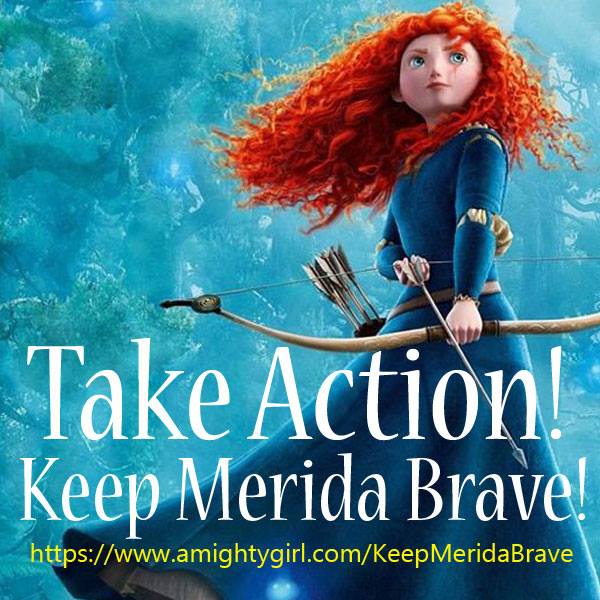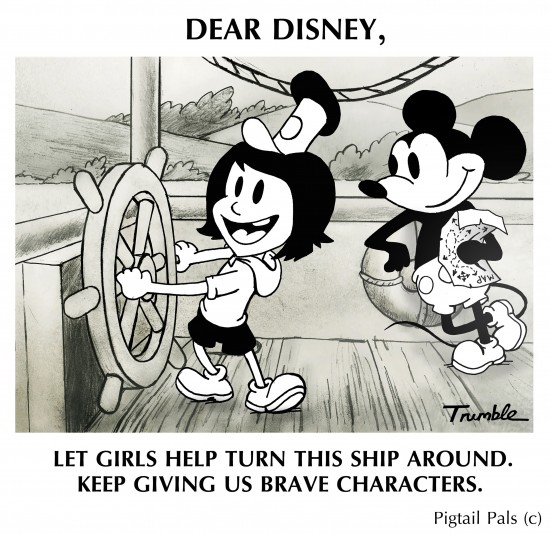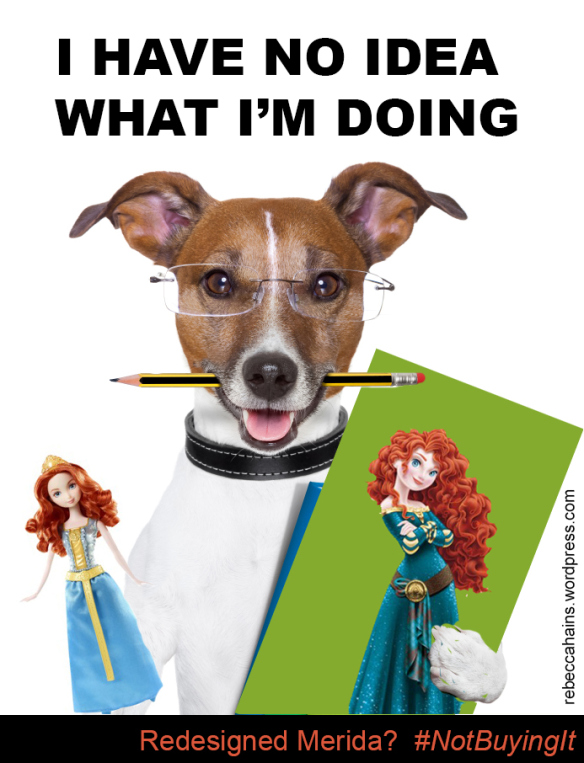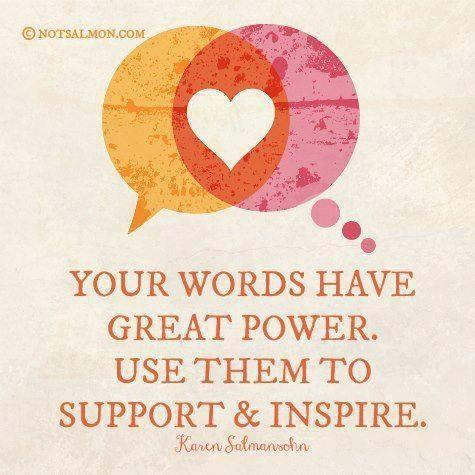 June 11, 2013 Update: Brave Girls Want.com is now live!
June 11, 2013 Update: Brave Girls Want.com is now live!
Use the hashtag #BraveGirlsWant on Twitter and “like” the new Facebook site to add your voice and views on the impact of media and marketing messaging so we can all help corporations envision (and create!) a healthier worldview for girls.
From the new Brave Girls Want.com site positioning statement:
“We are here to ask media creators to expand their version of what it means to be a girl, and recognize our girls as whole, complex people and not as gender stereotypes. Stop profiting from selling girls short.
We believe that girls deserve better, because we know that the consequences to girls’ well-being are serious.
We ask media creators to rethink products in development and ensure they teach girls to be strong, intelligent, and adventurous…”
I’ll be doing a full feature on some of their new initiatives soon, but meanwhile, here’s a great overview by media literacy advocate Erin McNeill who points to the power of social media to have positive messages heard and heeded. And here’s a newly published HuffPo interview with co-founder Melissa Wardy who launched the site with co-founder Inês Almeida and allies to give you a feel for what’s coming.
Now, back to the ‘whys’ framing the big picture of how this movement came into being…
May 23, 2013 Just when you thought the Disney debacle of merchandising Merida, the shero from BRAVE, couldn’t get any worse than the delicate, devolved confection dipped into a sparkle silo of singularity and stereotypes, parenting powerhouse Pigtail Pals posts THIS Merida misfire marketed ‘exclusively’ at Target. (finished with the alliteration now, promise)
Mass media reporters need to ‘get it’ that this is not a ‘one-off’ brouhaha about misrepresentation of a 3D cartoon figure.
This is more about child development, adolescent health and socioemotional underpinnings in a massively mediated culture.
“Brave Girls Want” is a consortium of critical thinkers eager to help explain the larger public health problems through research and applied science that makes this media and marketing story MATTER far beyond lousy merchandising choices and the integrity of creative content and characterization.
Shaping Youth advisory board member Dr. Jennifer Shewmaker, for example, helps connect the dots on resonance, cultural indicators and the impact of a mediated culture on a child’s worldview, identity, and sense of self in “Does Media Matter: Media and Perception of Reality.”
It’s smart stuff, giving us all a larger context of why it matters, with research clout and a reasoned response…
 Meanwhile, over 232,000 folks have signed A Mighty Girl’s petition which keeps growing like a cartoon snow ball causing an avalanche (add your voice here to #KeepMeridaBrave)…
Meanwhile, over 232,000 folks have signed A Mighty Girl’s petition which keeps growing like a cartoon snow ball causing an avalanche (add your voice here to #KeepMeridaBrave)…
…The echoing refrain is a cacophony of “Stop It” and “That’s NOT Merida!”
So, Disney, Why ARE You Still Promoting the Madeover Merida? our multiple allies and parenting partners want to know.
Heck, even Brave writer and co-director Brenda Chapman still wants to know! (updated interview with Brenda Chapman on ‘next steps’ and why it all matters, as well as an earlier in-depth exclusive on A Mighty Girl.com) Clearly the issue is not going away. And it shouldn’t. There are “next steps” in order!
Thankfully, the LARGER socioemotional variables ARE being addressed in cultural context, as hundreds of thousands of parents stomp through their own castles with a determined gait, just like Merida does here in this fun gif.
From meme whimsy to popular blog posts like media studies professor Rebecca Hains’ series of conversations, (love the one where animators/artists deconstruct the process) the tempo is shifting towards calls to action and commitment from Disney, with tenacity and spirited zeal.
 The new microsite Brave Girls Want will give further voice, context, and a gallery of user-generated commentary to turn this ship around…
The new microsite Brave Girls Want will give further voice, context, and a gallery of user-generated commentary to turn this ship around…
Brave Girls Want.com created by several respected allies and orgs, promises to use the momentum of the viral outcry and the pushback against narrowcasting girls, into a larger media literacy framing with opportunities to take positive action and elevate the dialog through education on the larger issues at stake.
Rather than plopping girls into limited, stifling princess roles, I hope “Brave Girls Want.com” will be a clarion call for corporations to rethink messaging as girls reach “Toward the Stars,” as well as a storytelling vehicle to add multi-layers of depth to the conversation with robust research and crowd-sourced ideation for Target, Disney and other giant corporations to listen and learn, then heed and LEAD by example.
Exciting! I love seeing multiple girl empowerment communities band together to make poignant points on both the macro and micro level.
My disclaimer? By now it’s readily apparent ALL of these leaders have become respected colleagues…
Whether it’s author/journalist Peggy Orenstein of Cinderella Ate My Daughter (always a media must read well beyond princess culture into health literacy pinkification) author/academic Lyn Mikel Brown of Packaging Girlhood (on our advisory board and worked on the APA Task Force on Early Sexualization) or new voices with strong parenting communities like Melissa Wardy Redefining Girly (due out Jan 1, 2014)
And yes, I have ‘skin in the game’ after writing for seven years about the increasingly surreal stronghold that media and marketing culture have on the saturation of messaging intake with youth. (Proud to contribute a blurb to the upcoming Redefining Girly too!)
So when Boston Globe commentary recently featured Shaping Youth alongside stellar parenting passionistas Melissa and Rebecca mentioned in this post, I was thrilled to be in great company of these two young moms who are slogging through these battles daily. Op-ed columnist Joanna Weiss chose this quote of mine from the “Beyond Merida” post about the pervasiveness across brands, capturing the systemic need for change,
“Pick a toy giant, ANY giant. Mattel. Lego. Hasbro. Disney. They’re all doing the churn and burn of “freshening” play products by actually DEVOLVING into appearance-based, empty-headed renditions of their once healthier “classic” toy selves.
Candyland’s been sexed up….American Girl’s been dumbed down…and Lego lobbed a double-whammy of “you’vegottabekiddinme,” managing to turn a benign geometric chunk of plastic into a freakin’ body image “sexy warrior” statement sporting ripped abs, drawn-on breasts, weaponry, wounds and wardrobe back slits.” —Amy Jussel
 I’m thrilled she chose that quote, because it cracks open the wider conversation that this is NOT just Disney bungling these ‘redesign’ messages, not at all!
I’m thrilled she chose that quote, because it cracks open the wider conversation that this is NOT just Disney bungling these ‘redesign’ messages, not at all!
And to me, it’s imperative to start using real life examples of impact on children that parents experience firsthand.
Media needs to redirect the spotlight away from ‘experts’ and instead shine it brightly on the stories and touchpoints shared by a new generation of parents, particularly younger moms and dads who are voicing instances verbatim, fighting for hearts and minds in this mediated culture.
That’s the kind of empirical “data” I glean from playgrounds and lunch time chatter…
It’s a massively overlooked angle on age compression that merits a substantive medical “kids health” focus, pediatric eyeballs, and MUCH more media air time in ‘that was then, this is now’ framing. Things have changed markedly in just a few years since devoting a media literacy lens to this sphere.
It’s important corporations hear this loud and clear too…As I wrote on Twitter,
“My 17-year old grew up in the second-hand smoke of sexualized, appearance-based media and marketing exposure, but YOUR youngest kids are coughing already, and deserve the chance to breathe!”
It’s huge, watching age compression take its toll on the evaporation of childhood, narrowing the window of time when kids are ‘Free to Be’ carefree sans Facebook-ready self-conciousness.
Large toy giants are either ethically bankrupt or cluelessly complicit, by not just selling insecurities and appearance-based cues, marketing and profiting from vapid values, but literally manufacturing them, along with public health problems that go with them. It’s ‘dumb and dumber’ short-sighted profiteering without an eye toward the long haul.
 It’s WAY past time to start “Redefining Girly,” and look beyond princess puffery and spindly, sexualized toy disasters to collectively callout in unison, “Brave Girls Want…Change.”
It’s WAY past time to start “Redefining Girly,” and look beyond princess puffery and spindly, sexualized toy disasters to collectively callout in unison, “Brave Girls Want…Change.”
…Not just for this specific BRAVE franchise, but to elicit BRAVE changes toward authenticity and multi-dimensional, diverse, complex characters on a global scale. Across all brands.
There are so many ways we can instill change AND serve profit motives in a much healthier manner…
Toy giants don’t seem to be spring-boarding from ‘what is’ to what COULD be…
They keep duct taping tired tropes in worn, battered old boxes taped up for reinforcement, reshaping and resealing rather than flattening the box, folding it up altogether and setting thinking free from parameters. This IS the age of the cloud, but you wouldn’t know it from the toy companies.
One of my first toy stories, Can Somethin Be Done About All This Consumption? reveals I’ve never been a fan of mass consumerism and veer toward a “story of stuff” mentality, (which may seem oxymoronic given my writer/producer branding role of 25 years as a new product development creative director) …but ‘The Story of Stuff’ itself IS “branding” as is every form of communication and messaging that leaves an impression, from commercial to personal imagery.
So in the spirit of this Pigtail Pals post calling for ideas to bridge the disconnects…humor me, while I put on a very traditional Disney marketing hat and shift the ship’s ballast towards opportunity for a win-win, healthier message. Here goes:
Free advice to Disney on how to fix the Merida mess
Disney is missing a mega-marketing opportunity to pull off an entire ‘brand extension,’ leading with an “adventure line” if they were smart.
They could enable the Pixar-style of SheHeroes to triumph free from princess-primping while opening a whole new product category, appealing to different personalities, interests, and yes, probably tapping a different demographic altogether.
Granted, an “adventure line” is thematic pigeon-holing too, but it might appeal to “A Mighty Girl” who wants to say “Adios Barbie” to body image cues, embrace a “Reel Girl” gender equality message, live in a ‘Princess Free Zone’ where all girls are not the same, and maybe create their own versions of media and marketing that matters in maker style like ReelGrrls.org.
Disney could’ve had massive “merchandising potential” minus the messy narrowcasting stereotypes and stifling, antiquated gender roles…
…And they probably still can if they tweak their listening skills to lead and learn “there is no princess gene” with a heartfelt mea culpa to the girl empowerment community worldwide, rather than a mousy dodge-n-deflect, “duck under the covers” minimization of the fiasco.
Own it. Understand the damage as Dr. Shewmaker frames so concisely, then fix it.
In Disneyesque storylines, they could even use Merida to take the lead to ‘redefine girly,’ then pull in Mulan, Jessie, and any of the spunkier sorts as a mass exodus from princess positioning still carefully crafted to ‘test market’ sales and feedback as they go.
Even just thinking about movie plot points and tie-ins with Brave, Disney could leverage STEM and fem with a new line of adventure sheroes willing and able to try new things based on discovery and exploration…
There are some obvious ‘gimmes’ playing off adventuresome “sheros”…
Toy-wise, sports/adventure gear are a natural given (way beyond archery, horseback, and the green rolling majesty of the Highlands) and science can be transformative, (creating elixirs/potions to keep with the plotline of transformation of the bear) but Disney could actually use this opportunity to push forward and break out of their consumer products division rut to start looking ahead toward the future using the theme of discovery and adventure, from 3D printing, prototypes and mind-mapping innovation to whimsical digital storytelling…more what ol’ Walt had goin to begin with…IMAGINATION. Consider new concepts like “MAKERS” meets merchandising with licensing use fees and kids ‘build upon’ projects integrated into toys (like Roominate or Little Bits)…
And what about online to offline participatory play, self-tracking games and fun that improve kids’ health, outdoor re-creations of Scottish knolls and nature quests bringing in geocaching coolness, accelerometer play outdoors with a white label/Disney use of Zamzee gamification, boisterously chasing the triplets in the movie or obstacle course chaos with Merdu in pursuit…or a hands-on, social emotional learning game about what it means to be BRAVE.
Counter-intuitive with proprietary corporations is the vast opportunity with open source design, which could bring about amazing hacks for branded customization monetized with a different model (again, “makers” use rental tools, access, workshops, knowledge sharing for 3D printing vs buying units themselves)
Kids could design and deploy their own family coat of arms, delve deep into family heritage, history and bravery themes in an informal app and photo meme with a social media sharing springboard, there are all kinds of inspiring spurs for brain plasticity and limitless self-creation that trump pre-fab, proprietary pre-sets of snoring, boring same ol’ consumption junction stuff.
Disney could even tie-in BRAVE adventure and discovery with trying new foods and healthier options, exploring new menus and taking a stronger stand to tout some of their successes in areas where they’ve CHOSEN to lead…
I’m talking about the slow fade from their ten-year deal with McDonalds to FINALLY focus on achieving a healthier food initiative to dump the junk using their mouse house clout to eliminate junk food advertising not just on the Disney channel, but on ALL Saturday-morning cartoons airing on ABC stations owned by Disney.
That mouse CAN roar when there’s enough reason. They just seem to wait til the snap trap triggers to force a solution, and that seems odd.
Understand, I’m not trying to be harsh, I’m just observing patterns…for example, when RAN.org delivered the good news that Disney’s paper suppliers are all now green and no longer depleting 60% of the Indonesian rainforests, realize it came AFTER a groundswell of a ‘feel the heat’ outcry which continues to be in play.
I really wish the mouse house would squeak out “the right thing” to begin with…Why not offer the “happiest corporate social responsibility policy and practices on earth?”
After reading How Disney and the Corporate Media Shape Youth Identity in the Digital Age or watching Media Education Foundation’s documentary film “Mickey Mouse Monopoly” it’s easy to see why it’s tough to always maintain an empathetic industry tonality, especially given my strong distaste for the coinage and consumption of Disney’s mega-marketing machine, but ultimately, it behooves us all to be solutions-based and collaborative rather than power-whining, so hopefully these ideas have been balanced.
Maybe the new “Brave Girls Want” microsite can be a parenting pool to put toes in the water and get Disney to “do the right thing” by coaxing out of the shallows and into the deep end.
What say you parenting partners?
Could we champion change with ideation for a win-win?
As the “turn this ship around” post reminds,
“What if instead of attacking Disney, we try to have a conversation with them (even if we are really upset) and express our point of view in a calm and positive way?”
Good point, we all need to use our “inside voices” to be heard.
Parenting communities will wildly applaud and support authenticity, including steps Disney has done right, like casting the human version of Merida in their theme parks to stay true to the Pixar character versus the floofy, vapid one…Word has it on the streets that the theme park/actor version of Merida is very ‘BRAVE’ tousled, and spirited much like the original character…
So why wouldn’t parents embrace the positive in that, and why wouldn’t Disney in turn play off of this fun, and reposition Merida as a sort of ‘antithesis princess’ in keeping with her original character? It’s not a big leap to fix…
They could use good-hearted humor in their character’s live shows and scripted park environs bringing in a wider range of role play among the other princesses as well; from video spoofs and memes seeded in social media they could actually end up with the best of both worlds, especially with jokes coming FROM Disney rather than being ON Disney. It makes good-branding sense…
What else would I do besides dialing down the ‘touch me not’ eyelash batting beauty bit, expanding alternatives for both genders with their consumer products division?
If I were Disney I might partner with orgs like Rachel Simmons’ Girls Leadership Institute, Girls for a Change, Girls Inc., GWLN.org, New Moon Girls, and other girl-centric leadership organizations, to get to know what girls leadership looks like…
And after transforming Merida back to her former self, (must’ve been a really bad batch of potion) I’d reassure the girls in the world that Disney DOES care beyond beauty imagery of objectified sugary targets to be consumed, by humbly asking for a ‘do-over’ and giving a sincere, firm commitment to dial down those helpless, canted princess poses, and eye-candy glam.
Finally, I’d “lean in” and get some gender and racial diversity to see through a fresh lens and lose the same ol’ tired formulaic merchandising stories that are weighing down the brand with outdated, “what a girl wants” absurdity.
These “fearless beauties” (at left) are fearful formulaic cookie cutter marketing, afraid to deviate…
As Girls CEO Connection makes crystal clear, educated activism IS in order at both the corporate and consumer level to begin cyclebreaking and leading change at Disney.
Founder of CEO Connection, Sylvia R.J. Scott cites Disney has plenty of cobwebs to clean up right within their own boardroom.
In their 17 member Leadership Management Team corporate/business division there are only four women leaders.
“On the eight-member Business team there is only one woman. Anne Sweeney, co-chair of Disney Media Networks, and president of the Disney/ABC Television Group, is the only woman on their Business Team. There are 10 members of the Walt Disney Board of Directors. Actually there are nine since the CEO is on it. The odds are better on the Board than on the Leadership Management Team. Four out of the nine are women including Sheryl Sandberg. In fact all the women on are powerhouses. Ms. Sandberg is the Chief Operating Officer for Facebook and has been in the news lately about women gaining leadership on Board of Directors and in the business world. So what happened here?” —Girls CEO Connection
Good question. What we DO know is that it doesn’t have to keep happening, nor does it need to happen again…
If Disney decides to ‘lean in’ to their multiple controversies and take the opportunity to listen and learn from consumer feedback about where they made their most avoidable and costly mistakes they could get out of the ‘villains’ section and give THEMSELVES a mini-makeover. (hint: trying to trademark a holiday is a definite no, Disney, and the Atlantic story on line-jumping for the 1% by ‘renting’ disabled people was a PR nightmare)
But if arrogance trumps all and they don’t give a flying fig, pixie dust eventually runs out. (if I’m not miscounting, they’ve made three strikes in just a matter of WEEKS, so it’s time for a shoulder shake)
Disney, when you’re ready to be bold and BRAVE and ditch the formula thinking for a healthier vision of “redefining girly” know there are 232,000+ strong voices ready to be raised in unison with the intention to change the channel of influence to a healthier worldview for girls.
We’re ALL here to help turn that ship around, because let’s face it, staying the course is putting our kids in some rough waters. Be brave, Disney. Heed and LEAD. The wee ones are watching. And parents are too.
“If you had the chance to change your fate…Would you?”
You DO have the chance, Disney. Let’s just do it, shall we?
Visual Credits: All visuals c. as visibly marked; Brave screenshot of Scotland scene via CarseyWolf.ucsb.edu, Fearless beauties jammies/screenshot via A Mighty Girl.com, Aim for adventure via PosterPlanet.net









Hi Amy,
Just wanted to say that “Brave Girls Want: Change” is excellent, and I plan to recommend it to my colleague who is designing a course on Disney in the Ethnic Studies Department here at UC, Riverside. I am so glad to learn of your work through Craig Wiesner, and look forward to connecting soon. Since I teach in the Media and Cultural Studies Department, I will recommend your work as a great resource and teaching tool for our students and colleague alike.
setsu shigematsu
Great to hear from you Setsu, I’m eager to open a dialogue about that Kickstarter, so am glad Craig/Derrick connected us…Will circle back when you’re ready. Impt topics for certain…meanwhile, here’s a Sat. smile along those lines you might enjoy given your Disney Ethnic Studies edu/collegiate division: http://www.visualnews.com/2013/06/12/disney-posters-get-honestly-remixed/
Looking forward to talking more…I’ll send you an email pronto to pursue the next steps…
Just watched Brave for the first time the other day, was curious if it caused as much PC furore as Frozen with the SJWs and sure enough, came across this.
FFS, get a life.
Brave wasn’t even that successful. I loved it, but in reality, Merida’s “feminism” was really just petulance that nearly cost the lives of herself and her mother.
Ironically, while you’re trying to “unpretty” Merida, Frozen made roughly 2.5 times the amount Brave did. Why? Most of the little girls INSTINCTIVELY wanted to be Elsa because not only was she extremely pretty but did an amazing (magic) makeover, despite the movie not even really being about her. The real hero was Anna, who did lots of brave and heroic stuff without magic, but most girls still wanted to be Elsa ’cause she is prettier.
I’m all for girls doing archery, riding horses, climbing mountains, marrying who they love, etc, but in the end, most girls just instinctively want to be girly, and Frozen vs Brave proves this. You can’t beat good ‘ol biology.
Viva le differance.
You’re about five years late to your outrage, and appear to be fixated on labels like SJW, when this is a media literacy analysis site…
Kindly redirect your mansplaining of ‘proving’ stereotypes (we call that confirmation bias in medialit) toward sites that prefer empirical hunches to quantifiable research on the harm of limiting narratives toward appearance based cues like the much cited APA sexualization task force on the damage to young girls of perpetuating these mythologies.
If you’d like to do a deeper dive and see the patterns of corporate framing of gender stereotypes in toys, here’s one about the vapid values and complicity in corporate credos. Enjoy! And please do cite your sources next round…academic medialit wonks aplenty here… https://shapingyouth.org/beyond-merida-toy-industry-is-complicit-in-marketing-vapid-values/